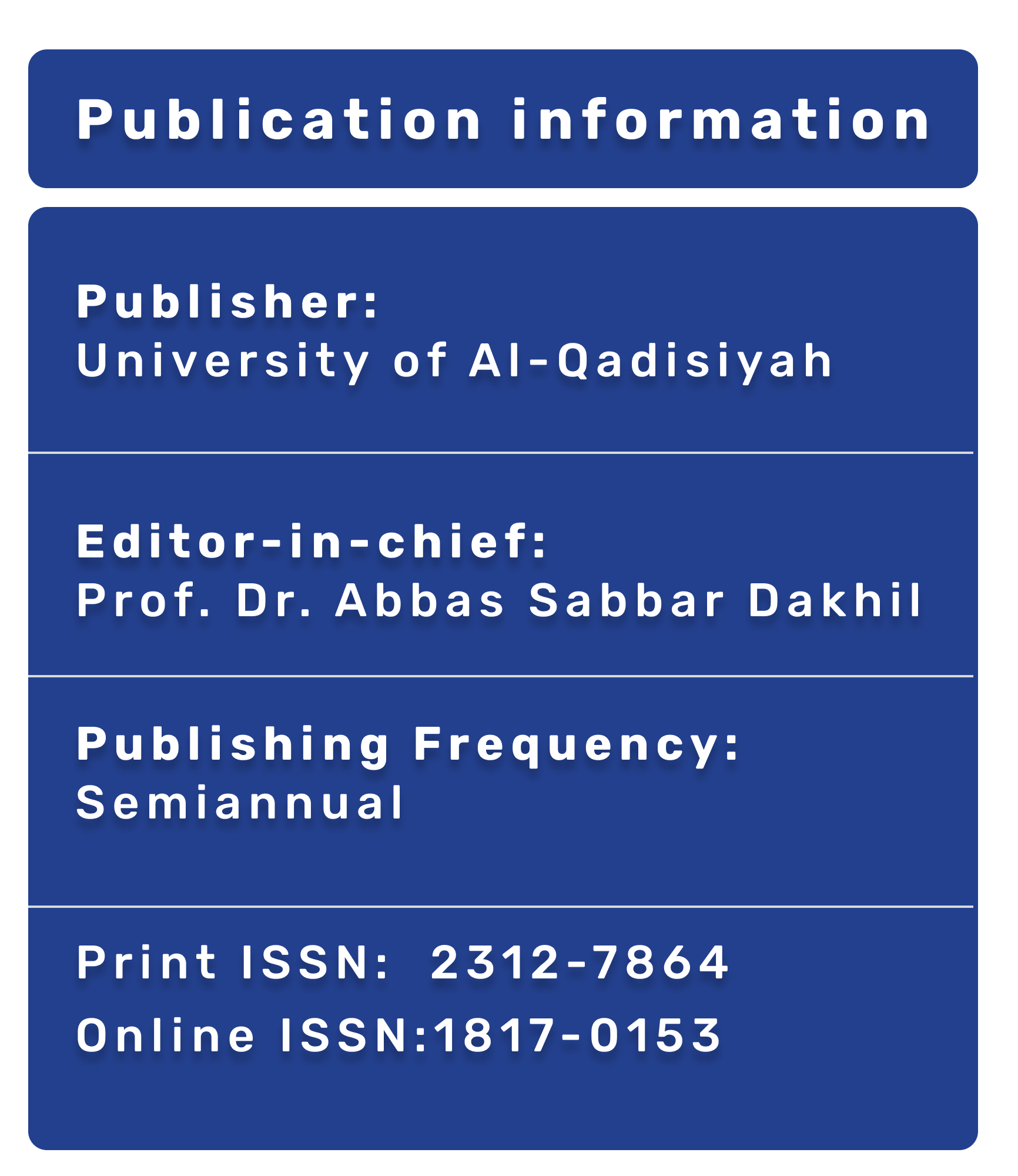Surgery for Pituitary Apoplexy: Vision Outcomes in Early vs Late Intervention
DOI:
https://doi.org/10.28922/qmj.2023.19.2.%25pالكلمات المفتاحية:
vision، pitutary، apoplexyالملخص
Introduction:
Pituitary apoplexy, with a reported prevalence of 0.6% to 13% in pituitary adenoma series, is commonly characterized as the constellation of neurologic symptoms and endocrine abnormalities resulting from bleeding or infarction of a preexisting pituitary lesion. it is characterized by sudden onset headache, nausea, vomiting, vision impairment, cranial nerve palsies, and, in some cases, loss of consciousness, most frequently due to the loss of pituitary, and hormonal, support.
Aim of the study: based on early pituitary apoplexy decompression, evaluate the visual results of the surgical operation for pituitary apoplexy.
Patients and methods :
In a study conducted between January 2019 to January 2022, Patients with radiological and clinical findings suggest pituitary apoplexy are included in the study, They were divided into two groups: group A those who presented early and underwent early surgical intervention(35 patients two excluded from the study lost in follow-up) and those who presented late group B (34 patients one lost during fellow up) and were scheduled for surgery (early <72 hrs., late>72 hrs. . ),
Results :
Pituitary apoplexy affects 66 patients, with a mean age of 35.66 years and a range of 16 to 68 years. Of these, 34 (51.51%) were men and 32 (48.48%) were women. Visual problems were a common symptom among all individuals. Bi-temporal was the most prevalent visual complaint in 44 patients (66.66%), followed by mono-ocular hemianopia in 13 patients (19.69%), both eye blindness in 4 patients (6.06%), right blindness in 4 patients (6.06%), and left blindness in 1 patient.
P value < 0.05 which is statistically significant that early presentation with early surgical intervention had a better response than a late presentation with late surgical intervention.
Conclusions :
Early surgical decompression of the pituitary fossa for apoplexy yields better results in terms of the resolution of visual issues.
المراجع
1. Cardoso ER, Peterson EW (1984) Pituitary apoplexy. A review.Neurosurgery 14:363-373
2. Ebersold MJ, Laws ER, Scheithauer BW, etal (1983) Pituitary apoplexy treated by transsphenoidal surgery. J Neurosurg 58:315-320
3. Laws ER Jr, Ebersold MJ (1983) Pituitary apoplexy-an endocrine emergency. World J Surg 6:686-688
4. Pozzati E, Frank G, Nasi MT, Giulani G (1987) Pituitary apoplexy, bilateral carotid vasospasm and cerebral infarction in a 15-year-old boy. Neurosurgery 20 (1): 56-59
5. Rouit RL, Fein JM (1972) Pituitary apoplexy: a review and reappraisal. J Neurosurg 37:280-288
6. Shirataki K, Chihara K, Shibata Y, etal (1988) Pituitary apoplexy manifested during a bromocriptine test in patient with a growth hormone-and prolactin-producing pituitary adenoma. Neurosurgery 23:395-397
7. Onesti ST, Wisniewski T, Post KD. Clinical versus subclinical pituitary apoplexy: presentation, surgical management, and outcome in 21 patients.Neurosurgery. 1990;26:980-986.
8. Yang T, Bayad F, Schaberg MR, et al. Endoscopic endonasal transsphenoidal treatment of pituitary apoplexy: outcomes in a series of 20 patients. Cureus. 2015;7:e357.
9. Gondim JA, de Albuquerque LAF, Almeida JP, et al. Endoscopic endonasal surgery for treatment of pituitary apoplexy: 16 years of experience in a specialized pituitary center. World Neurosurg. 2017;108:137-142.
10. Abbott J, Kirkby GR. Acute visual loss and pituitary apoplexy after surgery. BMJ. 2004;329:218-219.
11. Bi WL, Dunn IF, Laws ER Jr. Pituitary apoplexy. Endocrine. 2015;48:69-75.
12. Capatina C, Inder W, Karavitaki N, Wass JA. Management of endocrine disease: pituitary
tumour apoplexy. Eur J Endocrinol. 2015;172: R179-190.
13. Rajasekaran S, Vanderpump M, Baldeweg S, et al. UK guidelines for the management of pituitary apoplexy. Clin Endocrinol. 2011;74:9-20.
14. Sibal L, Ball SG, Connolly V, et al. Pituitary apoplexy: a review of clinical presentation, management and outcome in 45 cases. Pituitary. 2004; 7:157-163.
15. Briet C, Salenave S, Bonneville JF, Laws ER, Chanson P. Pituitary apoplexy. Endocr Rev. 2015;36: 622-645.
16. Ayuk J, McGregor EJ, Mitchell RD, Gittoes NJ. Acute management of pituitary apoplexyesurgery
or conservative management? Clin Endocrinol. 2004;61:747-752.
17. Bujawansa S, Thondam SK, Steele C, et al. Presentation, management and outcomes in acute
pituitary apoplexy: a large single-centre experience from the United Kingdom. Clin Endocrinol. 2014;80: 419-424.
18. Giritharan S, Gnanalingham K, Kearney T. Pituitary apoplexyebespoke patient management
allows good clinical outcome. Clin Endocrinol. 2016; 85:415-422.
19. L.E. Donovan, M.R. Welch, Headaches in patients with pituitary tumors: a clinical conundrum, Curr. Pain. Headache Rep. 4 22 (8) (2018) 57.
20. J. Schechter, Ultrastructural changes in the capillary bed of human pituitary tumors, Am. J. Pathol. 67 (1972) 109–126.
21. J.C. Teixeira, J. Lavrador, D. Sim˜ao, J. Migu´ens, Pituitary apoplexy: should endoscopic surgery be the gold standard? World Neurosurg. 111 (2018) e495–e499.
22. Leyer C, Castinetti F, Morange I, et al. A conservative management is preferable in milder forms of pituitary tumor apoplexy. J Endocrinol Invest. 2011;34:502-509.
23. Semple PL, Webb MK, de Villiers JC, Laws ER Jr. Pituitary apoplexy. Neurosurgery. 2005;56:65-73.
24. Ebersold MJ, Laws ER Jr, Scheithauer BW, Randall RV. Pituitary apoplexy treated by transsphenoidal surgery: a clinicopathological and immunocytochemical study. J Neurosurg. 1983;58: 315-320.
25.Woo HJ, Hwang JH, Hwang SK, Park YM. Clinical outcome of cranial neuropathy in patients with pituitary apoplexy. J Korean Neurosurg Soc. 2010;48:213–8.








